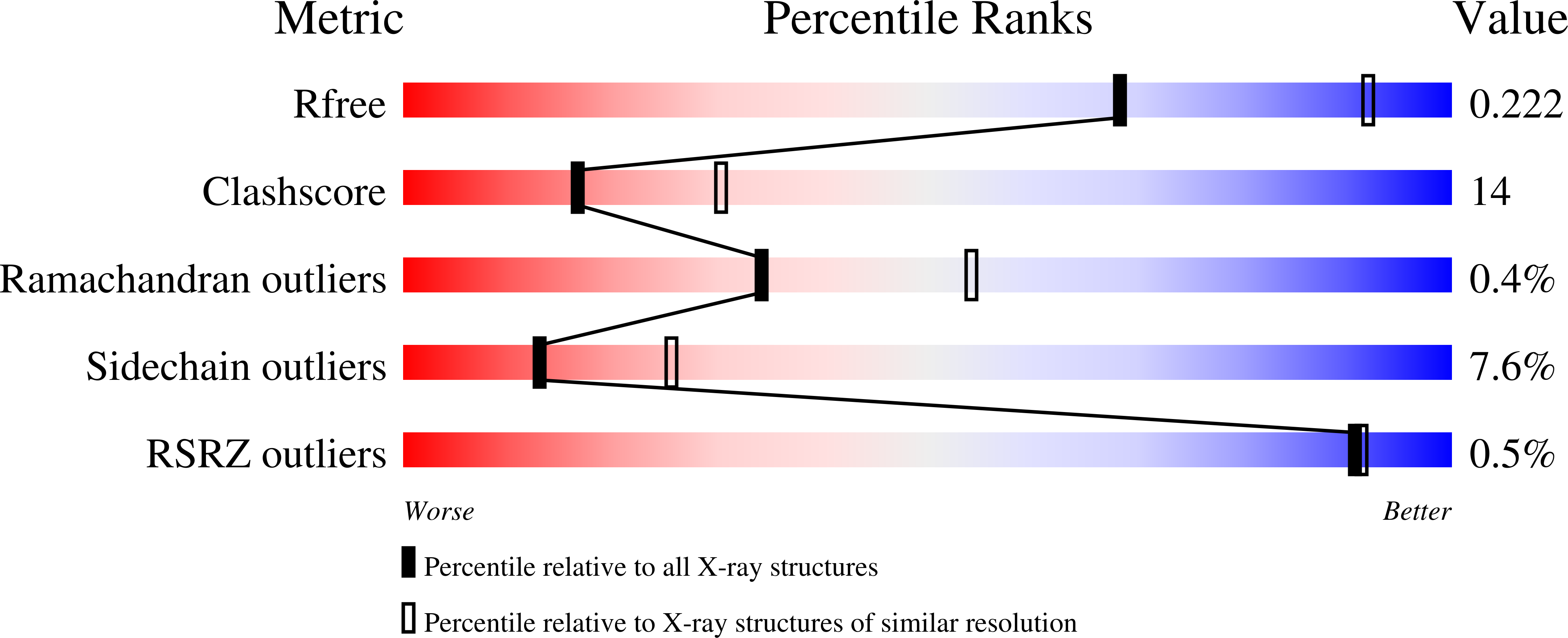Structural and Catalytic Differences between Two FADH(2)-Dependent Monooxygenases: 2,4,5-TCP 4-Monooxygenase (TftD) from Burkholderia cepacia AC1100 and 2,4,6-TCP 4-Monooxygenase (TcpA) from Cupriavidus necator JMP134.
Hayes, R.P., Webb, B.N., Subramanian, A.K., Nissen, M., Popchock, A., Xun, L., Kang, C.(2012) Int J Mol Sci 13: 9769-9784
- PubMed: 22949829
- DOI: https://doi.org/10.3390/ijms13089769
- Primary Citation of Related Structures:
4G5E - PubMed Abstract:
2,4,5-TCP 4-monooxygenase (TftD) and 2,4,6-TCP 4-monooxygenase (TcpA) have been discovered in the biodegradation of 2,4,5-trichlorophenol (2,4,5-TCP) and 2,4,6-trichlorophenol (2,4,6-TCP). TcpA and TftD belong to the reduced flavin adenine dinucleotide (FADH(2))-dependent monooxygenases and both use 2,4,6-TCP as a substrate; however, the two enzymes produce different end products. TftD catalyzes a typical monooxygenase reaction, while TcpA catalyzes a typical monooxygenase reaction followed by a hydrolytic dechlorination. We have previously reported the 3D structure of TftD and confirmed the catalytic residue, His289. Here we have determined the crystal structure of TcpA and investigated the apparent differences in specificity and catalysis between these two closely related monooxygenases through structural comparison. Our computational docking results suggest that Ala293 in TcpA (Ile292 in TftD) is possibly responsible for the differences in substrate specificity between the two monooxygenases. We have also identified that Arg101 in TcpA could provide inductive effects/charge stabilization during hydrolytic dechlorination. The collective information provides a fundamental understanding of the catalytic reaction mechanism and the parameters for substrate specificity. The information may provide guidance for designing bioremediation strategies for polychlorophenols, a major group of environmental pollutants.
Organizational Affiliation:
Department of Chemistry, Washington State University, Pullman, WA 99164, USA.














